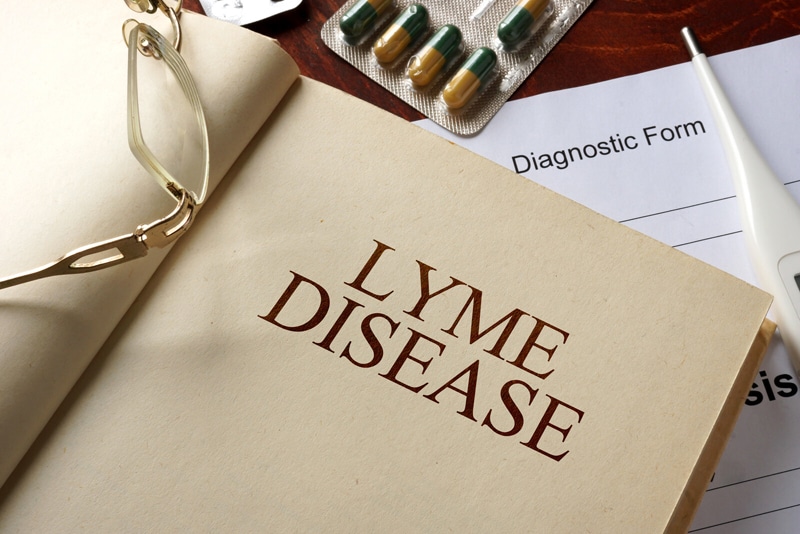Lyme disease is a common infectious illness caused by four main species of bacteria – Borrelia burgdorferi, Borrelia mayonii, Borrelia afzelii and Borrelia garinii. Mainly caused by the bacterium Borrelia burgdorferi, this is the most common tick-borne illness in the United States. Not all health insurance companies cover the cost of full treatment for this infection. Using the right medical codes for documenting symptoms, diagnosis and treatment of this illness is crucial for accurate processing of medical claims. Medical coding outsourcing helps rheumatologists or primary care physicians treating the illness to submit their medical claims without errors.
Key risk factors for contracting this disease include spending too much time in grassy and heavily wooded areas, having exposed skin, and not removing ticks properly. According to the data from CDC, a total of 42,743 confirmed and probable cases of Lyme disease were reported in 2017, which is 17% more than in 2016.
Areas of Infection, Symptoms and Related ICD-10 Codes
Left untreated, tick-borne infection can produce a wide range of symptoms depending on the stage of infection, and can spread to:
- Joints – A69.23 Arthritis due to Lyme disease
- Heart – A69.29 Other conditions associated with Lyme disease
- Nervous system – A69.22 Other neurologic disorders in Lyme disease
Key symptoms that can occur within three to 30 days post tick bite include:
- Fever (R50.9 Fever, unspecified)
- Chills (R68.83 Chills (without fever))
- Headache (R51 Headache)
- Fatigue (R53.83 Other fatigue)
- Muscle and joint ache (M25.50 Pain in unspecified joint)
- Swollen lymph nodes (R59.9 Enlarged lymph nodes, unspecified)
Later signs and symptoms include:
- Severe headache (R51)
- Additional rashes (L30.9 Dermatitis, unspecified)
- Arthritis (A69.23)
- Facial palsy (R29.810 Facial weakness)
- Intermittent pain in tendons, muscles, joints, and bones (M25.50)
- Heart palpitation (R00.2 Palpitations)
- Dizziness (R42 Dizziness and giddiness)
- Inflammation of the brain and spinal cord (A69.22 Other neurologic disorders in Lyme disease)
- Nerve pain (M79.2 Neuralgia and neuritis, unspecified)
- Shooting pain (R52 Pain, unspecified)
- Problems with short-term memory (F06.8 Other specified mental disorders due to know physiological condition)
Challenges in Diagnosing Lyme Disease
The diagnosis of Lyme disease will be based on the assessment of the patient’s health history and a physical exam. In a recent news article, The New York Times discussed the difficulties of diagnosing Lyme disease right the first time around. The blood tests available now don’t test directly for the bacteria, but instead test for the body’s antibody response. Also, there is no reliable biomarker for Lyme, no way to test, unequivocally, for the presence of the bacteria Borrelia burgdorferi, which are transmitted by tick bite and cause the disease.
The CDC also does not recommend laboratory tests for patients who do not have typical symptoms of Lyme disease. Mayo Clinic recommends Enzyme-linked immunosorbent assay (ELISA) test and Western blot test for diagnosing this condition.
CPT codes for these tests are –
- 86617 Antibody; Borrelia burgdorferi (Lyme disease) confirmatory test (e.g., Western Blot or immunoblot)
- 86618 Antibody; Borrelia burgdorferi (Lyme disease)
Related ICD-10 codes are –
- A69.2 Lyme disease
- A69.20 Lyme disease unspecified
- A69.21 Meningitis due to Lyme disease
- A69.22 Other neurologic disorders in Lyme disease
- A69.23 Arthritis due to Lyme disease
- A69.29 Other conditions associated with Lyme disease
Fierce Biotech recently reported that FDA has expanded its marketing indications of a line of diagnostic tests to include checks for Lyme disease. The tests developed by Zeus Scientific run two enzyme immunoassays either concurrently or sequentially instead of following the traditional two-step process to detect the disease, which includes a subsequent western blot procedure to detect target proteins and antibodies. These tests are expected to improve confidence in diagnosing a patient for a condition that requires the earliest possible treatment to ensure the best outcome for patients.
Antibiotics are also used to treat Lyme disease. Most cases are successfully treated with oral antibiotics such as doxycycline, amoxicillin, or cefurozime axetil. An experienced medical billing company can provide the services of skilled medical coders and billing specialists for accurate documentation and billing of such infectious diseases.



0 Comments